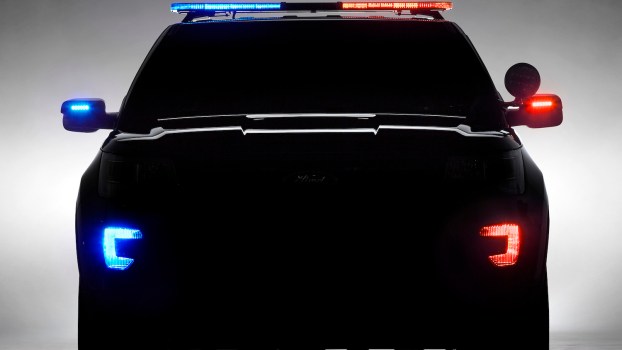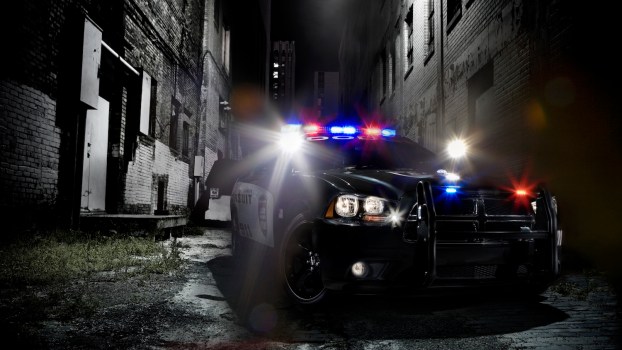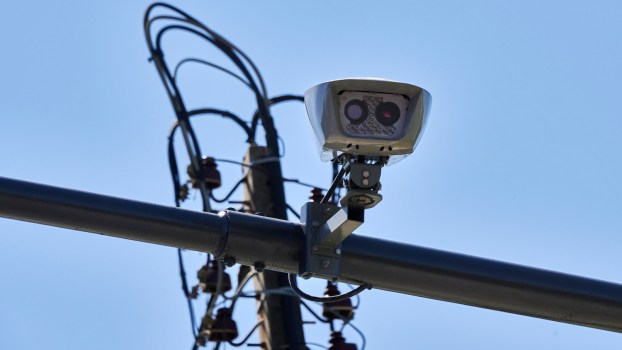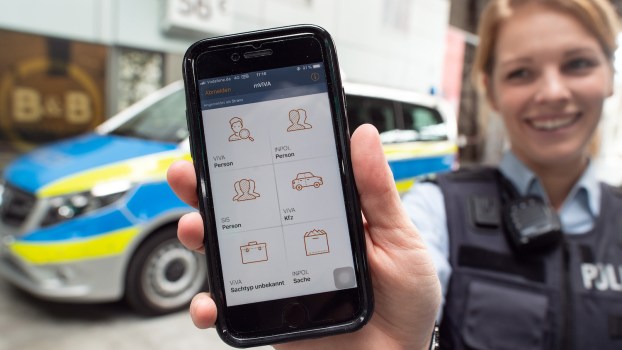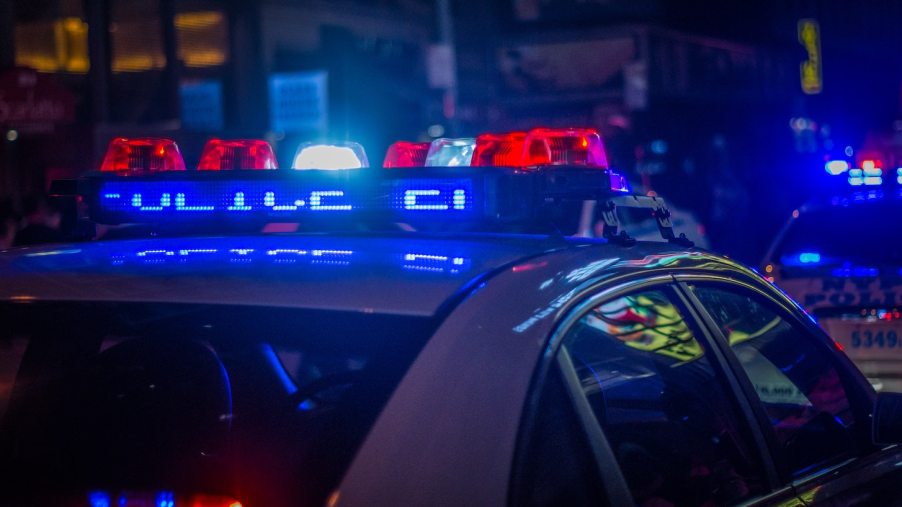
Here’s the Color of Police and Fire Truck Lights in Every State
Differentiating fire trucks from police cruisers enforcing car safety is not always simple. In most states, only police cars use blue lights, while fire trucks use red lights. But in certain states, the opposite is true. Double-check your local laws in our handy table.
Police car and fire truck light color by state
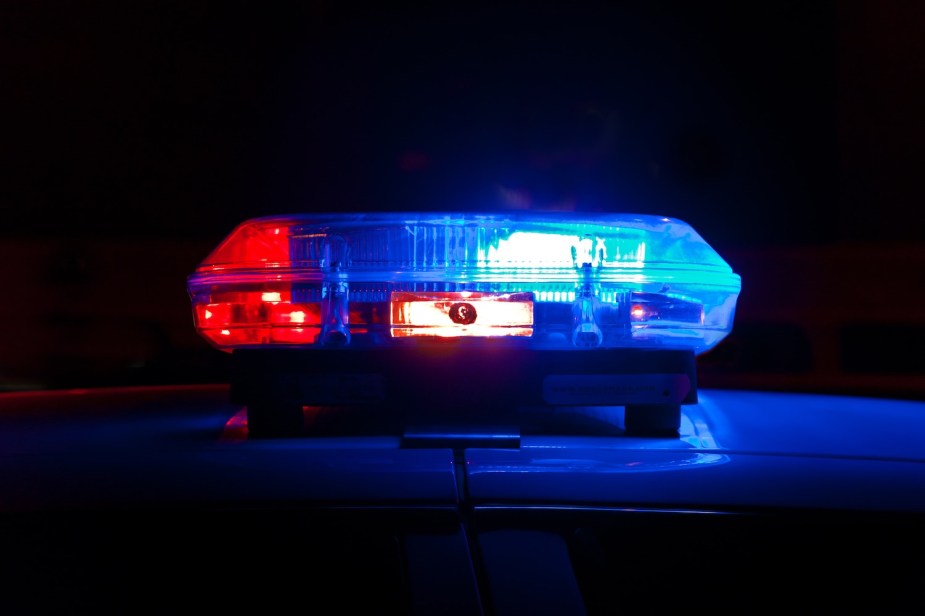
| State | Police Car Lights |
| Alabama | Police cars may use both red and blue lights. No other emergency vehicle may use blue lights. |
| Alaska | Police may use red lights. At the discretion of a police chief, a marked police vehicle may also use a blue light at the same time as its red lights. |
| Arizona | City and county police departments must use a red light and can also use a blue light. State police use mostly blue lights and can also use a red light. |
| Arkansas | Police only use blue lights. |
| California | All emergency vehicles must have a solid red light. Police officers may also have a flashing blue light. Finally, police must use flashing amber lights when enforcing an order of the court in a densely populated area. |
| Colorado | Police officers must use a red light and may use a blue or white light as well. |
| Connecticut | Police only use red lights. Blue lights may be used on the personal vehicles of volunteer firefighters. |
| Delaware | Police use red lights. Firefighters use blue lights. |
| Florida | Only police officers can possess or use blue lights. Firefighters use red lights. |
| Georgia | Police may use blue, red, or amber lights. Firefighters may not use blue lights. |
| Hawaii | Most police vehicles use blue and red lights, though the arrangement may vary by county. |
| Idaho | Police are required to use blue lights, and many are equipped with red lights as well. |
| Illinois | Police use red and white lights. Fire trucks can use red, white, and blue lights. |
| Indiana | Police must use both red and blue lights. Firefighters use red and white lights. |
| Iowa | Police must use both red lights (driver-side roof) and blue lights (passenger-side roof). Fire trucks also use blue lights. |
| Kansas | Police may use both red and blue lights. Firefighters must use red lights. |
| Kentucky | Police vehicles must have a blue light, while fire vehicles must have a red light. |
| Louisiana | Both police vehicles and fire vehicles must use red lights and may use blue lights as well. |
| Maine | Police must use blue lights and may use red lights too. Firefighters may use both blue and red lights. |
| Maryland | Police must use red lights and can use blue lights as well. Firefighters may not use blue lights. |
| Massachusetts | Police may use both red and blue lights, including a reverse-facing red light. Firefighters use red lights but can also have a reverse-facing blue light. |
| Michigan | Police can use red or blue lights. Firefighters must use red lights. |
| Minnesota | Police cars must have a red light and can have a blue light, either on the passenger side roof or facing backward. Fire trucks may not use blue lights. |
| Mississippi | Police must use blue lights and can use red lights as well. Fire trucks must use red lights. |
| Missouri | Police must have one red light and one blue flashing light. Fire trucks can also use blue lights. |
| Montana | Police lights should flash both blue and red. Fire trucks use red lights. Any emergency vehicle can use green lights for crowd control. |
| Nebraska | Police are free to use red, white, and blue lights. Fire trucks may only use red and white lights. |
| Nevada | Police must have a solid blue and flashing red light. Fire trucks must have a flashing red light and can also use a blue light. |
| New Hampshire | Police must use blue lights and may use red lights. Fire trucks must use red lights and cannot use blue lights. |
| New Jersey | Police can use blue or red lights in any configuration. Fire trucks must use red flashing lights. |
| New Mexico | Police use red lights. Firefighters also use red lights, though they may mount a single blue light on the back of a fire truck. |
| New York | Police use red, white, and/or blue lights. The blue lights must face backward. Fire trucks may not use blue lights. |
| North Carolina | Police use blue lights, though some city police departments have added red lights. Fire trucks use red lights. |
| North Dakota | Police must display red flashing lights and may also use white and blue lights. Government fire trucks have the same laws. |
| Ohio | Police must use red and white. Police may also use blue lights, but fire trucks cannot. |
| Oklahoma | Police and must have flashing lights that are blue, red, or both. Fire trucks also can use blue or red lights. |
| Oregon | Police use blue, white, and amber-colored flashing lights. Red lights are reserved for fire trucks. |
| Pennsylvania | Most police use red and blue lights but can also use white and yellow lights. Fire trucks may also use red, blue, and amber lights. |
| Rhode Island | Only police cars may use blue lights. Both police and fire may use red and white flashing lights. |
| South Carolina | Police must have blue lights. They may also have red and white lights. Fire trucks must have red lights. |
| South Dakota | Police can use a combination of red and blue lights. Fire trucks may also use a combination of red and blue lights. |
| Tennessee | Police can use red, white, and blue lights. Fire trucks can only use red and white lights. |
| Texas | Police can use red, white, and blue lights. Fire trucks can only use red and white lights. |
| Utah | Only police cars can have blue flashing lights and rotating lights. Both police and fire can use red and white lights. |
| Vermont | Police are only allowed to have blue and white lights. Fire trucks are only allowed to have red and white lights. |
| Virginia | Police can use any combination of red, white, and blue lights. Fire trucks can only use red and white lights. |
| Washington | Police must have at least one blue light. They can also use amber, white, and red lights. All fire trucks must have red lights to be recognizable. |
| West Virginia | Only police can use flashing blue lights. Fire trucks are allowed to use red lights. |
| Wisconsin | Only police are allowed to use a combination of red and blue lights. Fire trucks use red adn white lights. |
| Wyoming | Police cars aren’t subject to any color restrictions. Fire trucks must have at least one red light and can also have amber and blue lights. |
How can I learn more about my state’s emergency vehicle lights?
There’s much more to the laws dictating emergency vehicle lights than their color. Certain states regulate when police or fire vehicles can use their lights or where they can place them.
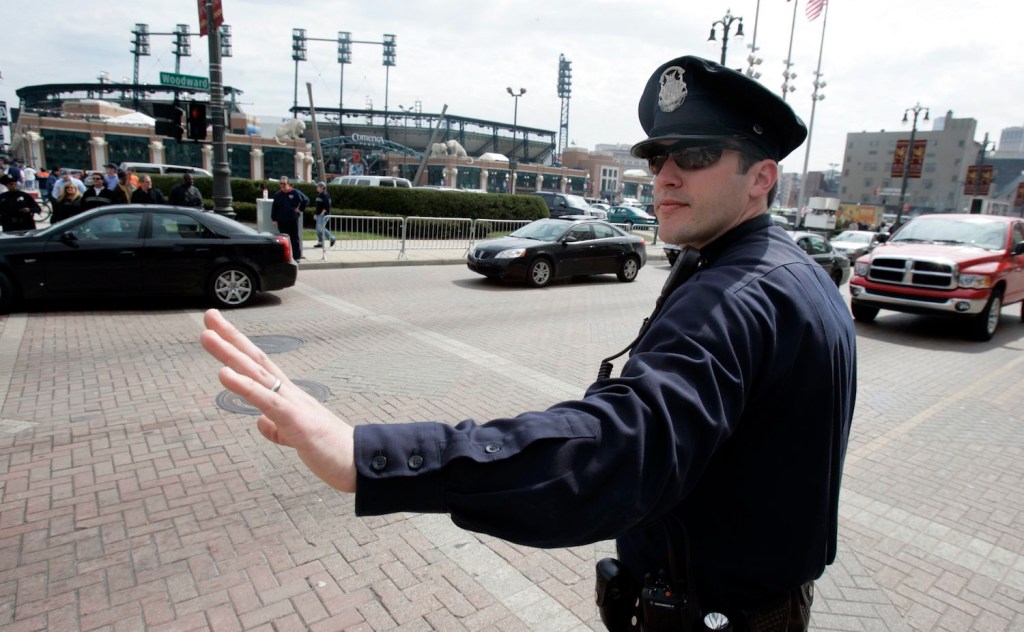
For example, many states require fire trucks use red lights and police to use blue lights. But certain states also allow a non-flashing blue light at the back of a fire truck, to make it more visible in the daylight. If you think blue lights always mean police in these states, think again.
Our source for the above table is Extreme Tactical Dynamics. This website maintains a database of the current emergency vehicle light laws in every state.
Can unmarked police cars have emergency lights?
Like the laws around emergency light colors, the laws around unmarked police cars vary by state. States that do allow traffic stops with unmarked police cars require that those cars have light bars. But those lights can be hidden behind the grille or inside the car’s cab.
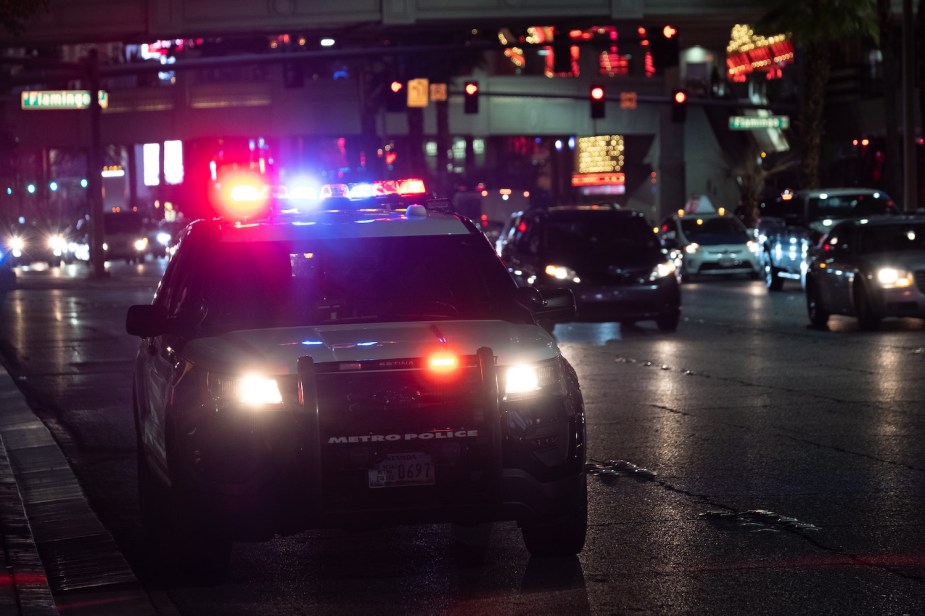
Not only do unmarked police car laws vary by state, but several states have recently changed their laws or best practices. Make certain to check out our state-by-state guide to unmarked police car laws or find out why the color of police car lights varies by state in the video below:
